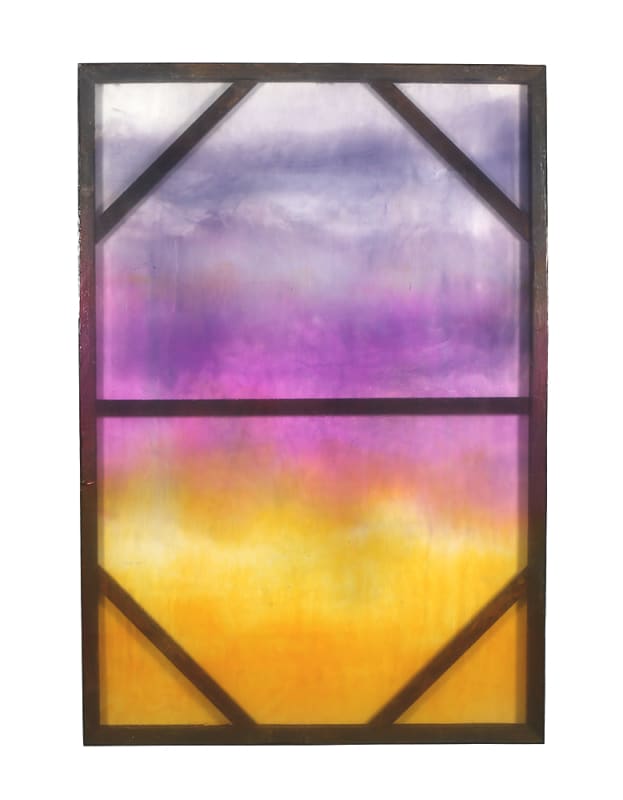'My practice examines alchemical healing through the experience and arrangement of color and form in space. Influenced by sacral architecture and subtle subversions of art historical conventions, the work prompts dialogues of collective healing, radical visibility, memory, and the reimagining of sacred sites.' – Chris Watts
Bode is excited to announce Chasing Shadows: Vol. 1, a solo show with works by New York based artist Chris Watts. It is Watts’ second solo show at the gallery presenting an extensive new body of work.
What if windows had the ability to tell stories of what has been seen through them? Stories, as recent as yesterday’s occurrences and as ancient as history. Stories about who peered through their transparent barriers, stories about which reality they gazed from into another, and stories about what was observed on the opposite side? What if windows could show us everything they have ever shown anyone before, becoming not only a portal between inside and outside but between countless other dimensions of time and space. Between the visible and the invisible, between the tangible and intangible.
When looking at Chris Watts’ work, one can easily imagine thoughts and reflections like the above meandering through the artist’s mind while creating his multimedial works that bend the definitional boundaries of painting. And even though features like their semi-transparency, underlying structures, visible in parts, and most of all their glass-like resin surface both visually and formally recall the appearance of windows, the works open onto something far more complex. Within his practice of arranging form and color in space, as he describes it himself, he follows an ongoing exploration of surface and sensory perception in interaction with architectural elements. Thus, creating a heightened awareness of our bodies and emotions in relation to spiritual resonance within the works. Watts says: ‚The paintings speak to this lingering ambience just beyond cerebral clarification. A space of liberation for the unseen. Since I’ve begun working with various pigments, both historical and native, I have considered alternative cosmologies within traditional indigenous knowledge to address issues of social justice, healing for historically marginalized communities, and our relationship to space and place within the Black radical imagination.’ Following the question ‚Where are you really from?‘, Watts investigates themes of collective memories that tell tales of resistance and the visibility and invisibility of the Black body in space and society.
Silk or poly chiffon build the basis of the works, stretched onto architectural constructions and covered with resin. It is through Watts’ work with pigments that an ethereal quality emerges, as he gathers and mixes pigments from around the world, deeply attuned to their histories and cultural significance. These colorants might just as well be sourced from the streets of New York as they could be bestowed upon Watts by a Peruvian shaman, each carrying its own story and resonance. Their journey makes them cosmological mediators, connecting ancestral knowledge, rituals, and alternative transfers of knowledge manifesting in the works as a bridge between tangible and intangible realms. Rooted in ritual and improvisation, and guided by an attentive listening to materials and a willingness to follow the unpredictability of their interactions, Watts’ practice opens a dialogue between pigment, surface, and space, revealing the work’s living, responsive nature beyond formal qualities.
Transcending the simple comparison to windows, the works act as switches into another, layered assemblage of spaces. While they guide along meditative realms and encounters with the immaterial (after all, it is not by chance that they evoke the look of stained-glass church windows) they remain grounded as physical, immobile objects, asserting themselves as works of art. They can be both looked at and beyond, a duality that makes it hard to determine where the imagery actually emerges. It is an ambiguous zone, neither fully reducible to the work itself nor merely to its surface.
While it is obvious that our conventional windows will forever lack the ability to speak of their past, will forever lack the ability to act as an archive documenting their ever-changing surroundings, Watts gifts his window-works a unique and insightful voice to speak to us.
Text by Maren Möhlenkamp

